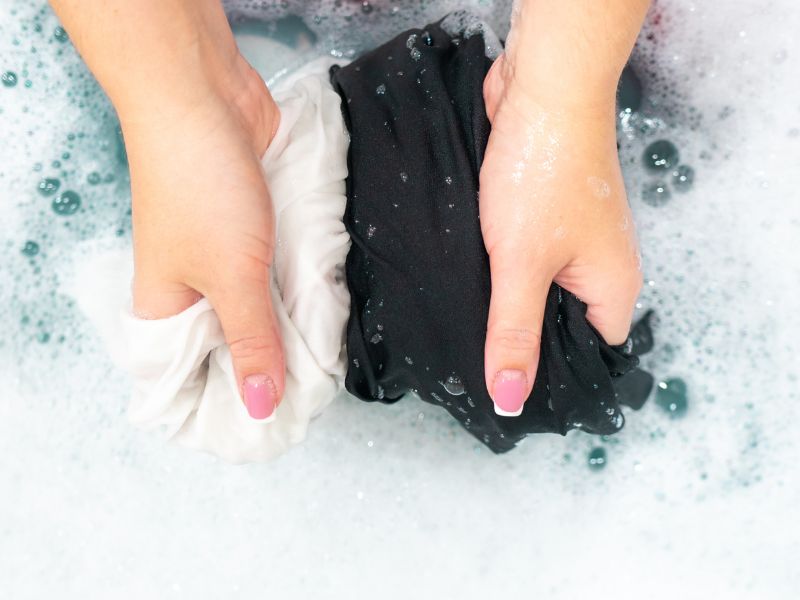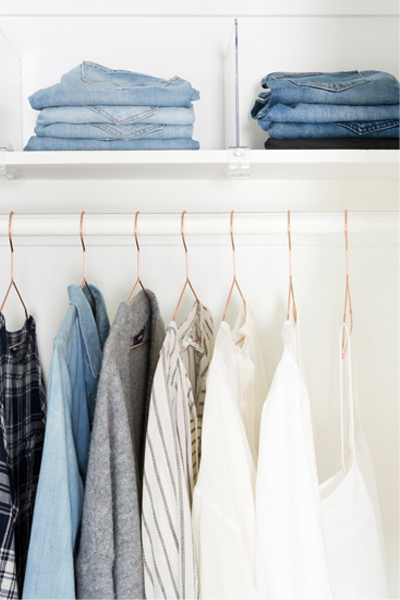A Simple Guide
Your wardrobe is an investment, and taking care of your clothe is not just about extending the life of your favourite pieces; it’s about saving money, reducing waste, and contributing to a more sustainable lifestyle. With a little bit of effort and the right knowledge, maintaining your clothing at home can be straightforward and rewarding. Here’s guide to ensure your clothes look their best for years to come.
1. Read the Care Labels
Every garment has a story, and its care label is the plot. Those little symbols on the tags might seem cryptic, but they’re the secret to keeping your clothes in their best condition. Learn the basics, such as:
- Machine wash: Temperature matters—cold water is generally gentler on fabrics.
- Dry clean only: Trust the tag; some materials, like silk or velvet, require professional care.
- Hand wash recommended: Use mild detergent and lukewarm water to protect delicate fabrics.
Taking the time to follow these instructions prevents unnecessary wear and tear.
2. Sort Before You Wash
Mixing different colours and fabrics is a recipe for disaster. Before throwing everything into the washing machine, take a moment to sort:
- By colour: Wash darks, lights, and whites separately to avoid color bleeding.
- By fabric type: Keep heavy items like jeans away from delicate fabrics such as lace or chiffon.
- By dirt level: Avoid washing heavily soiled items with lightly worn clothes.
Sorting ensures your garments stay vibrant and intact.
3. Wash Smart
Washing is where a lot of damage happens. Being mindful of how you wash can dramatically extend the life of your clothes:
- Cold water is your friend:: Whenever possible, It’s gentler on fabrics and helps prevent shrinkage or fading and reduces energy use.
- Use an eco-friendly detergent : biodegradable and free of harsh chemicals.
- Skip the fabric softener for synthetic fabrics: It can reduce their breathability and clog fibres.
- Use a gentle cycle: Unless your clothes are heavily soiled, a gentle cycle minimises stress on fabrics.
- Avoid overloading the machine: Clothes need room to move; overloading causes unnecessary friction.
For delicate items, consider handwashing or placing them in a mesh laundry bag to protect them in the washer.

4. Dry with Care
Dryers are quick and convenient, but they can be harsh on clothing fibres. Whenever possible, air drying is a gentler alternative:
- Hang clothes on a drying rack or clothesline: Hang sturdier items like cotton shirts or jeans on a clothesline.
- Use low-heat settings: If you must use a dryer, opt for lower temperatures and remove clothes while slightly damp to avoid over drying. Remove clothes promptly to minimise wrinkles.
- Lay flat to dry: Knitted or heavy garments, like sweaters, should be laid flat on a towel to prevent stretching.
Drying carefully will keep your clothes looking fresh and fitting well.
5. Store Thoughtfully
Good storage habits can significantly extend the life of your clothes. Here’s how:
- Use the right hangers: Invest in padded or wooden hangers to maintain the shape of garments.
- Fold heavy knits: Hanging sweaters or similar items can cause them to stretch over time.
- Protect against pests: Use natural solutions like cedar blocks or lavender sachets to keep moths at bay.
- Keep away from sunlight: Direct sunlight can fade colours and weaken fibres, so store clothes in a shaded or covered area.
Proper storage not only protects your wardrobe but also makes finding your favourite pieces easier.
6. Handle Stains Promptly
Spills happen, but quick action can save your clothes. Here are some general tips:
- Blot, don’t rub: Use a clean cloth to gently blot the stain and avoid spreading it.
- Know your enemy: Different stains require different solutions. For instance:
- Oil stains: Sprinkle baking soda to absorb grease.
- Wine spills: Dab with a mixture of water and vinegar.
- Ink stains: Rubbing alcohol can work wonders.
Tackle stains immediately for the best chance of success.
7. Embrace Repairs
Instead of discarding damaged clothing, embrace the opportunity to repair or upcycle it. Learn a few basic skills like sewing on buttons, fixing small tears, or patching holes. If the repair feels beyond your capabilities, many tailors offer affordable services. Not only is this approach sustainable, but it also saves your favourite pieces from the landfill.
8. Storing Clothes the Right Way
Proper storage is key to preventing damage and maintaining your clothes’ longevity.
- Clean before storing: Always wash clothes before putting them away to prevent stains from setting and deter pests.
- Use breathable storage: Avoid plastic bags or airtight containers for natural fibres like cotton, wool, or silk. Opt for breathable cotton garment bags or storage bins.
- Protect against pests: Use natural solutions like cedar blocks or lavender sachets to keep moths at bay.
- Keep away from sunlight: Direct sunlight can fade colours and weaken fibres, so store clothes in a shaded or covered area.
- Hang: Dresses, blouses, trousers, and jackets (use padded or wooden hangers).
- Fold: Sweaters, t-shirts, jeans, and heavy knits. Folding prevents stretching and sagging.

9. Rotate Your Wardrobe
Rotate your wardrobe to distribute use evenly and keep garments in good condition. Seasonal rotation is also a great way to store items safely until they’re needed again. Store out-of-season clothes in a cool, dry place. Add cedar blocks or lavender sachets to deter moths.
Final Thoughts
Caring for and maintaining your clothes at home requires minimal effort, just a little mindfulness and consistency. Here are some ideas for embracing a more sustainable laundry routine:
- Wash less: Only launder your clothes when it’s truly necessary. Spot clean when possible.
- Use a microfiber-catching filter to help reduce microplastic pollution.
- Line dry whenever you can to save energy and minimize wear on your garments.
- Invest in quality over quantity: Fewer, well-made clothes last longer and help reduce waste.
By following these simple steps, you can extend the life of your wardrobe, save money, and contribute to a more sustainable lifestyle.
